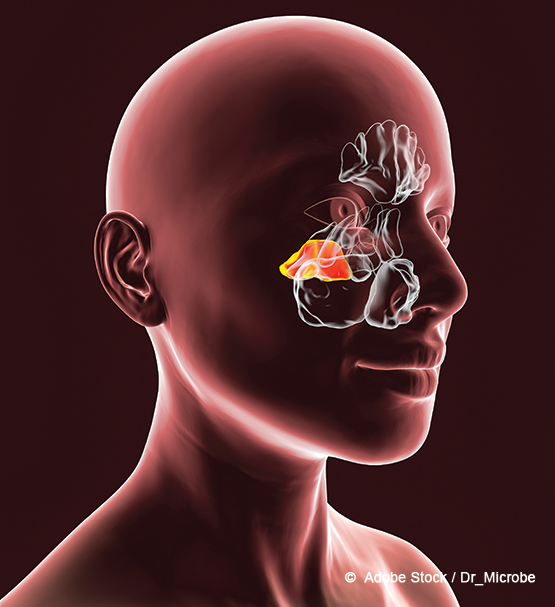 TRIO Best Practice articles are brief, structured reviews designed to provide the busy clinician with a handy outline and reference for day-to-day clinical decision making. The ENTtoday summaries below include the Background and Best Practice sections of the original article. To view the complete Laryngoscope articles free of charge, visit Laryngoscope.com.
TRIO Best Practice articles are brief, structured reviews designed to provide the busy clinician with a handy outline and reference for day-to-day clinical decision making. The ENTtoday summaries below include the Background and Best Practice sections of the original article. To view the complete Laryngoscope articles free of charge, visit Laryngoscope.com.
BACKGROUND
 Juvenile nasopharyngeal angiofibromas (JNA) are benign, locally destructive lesions that typically occur in adolescent males. These vascular tumors can present numerous clinical and surgical challenges. Complete resection of advanced-stage tumors can be difficult due to the involvement of critical neurovascular structures including the orbit, optic nerve, internal carotid artery, cavernous sinus, and middle cranial fossa. When gross total resection cannot be achieved, additional adjuvant therapies may be considered to achieve disease control. Considering the available evidence, can adjuvant therapies such as radiation therapy (RT) or flutamide achieve acceptable outcomes although minimizing serious morbidity and mortality in patients with extensive JNAs?
Juvenile nasopharyngeal angiofibromas (JNA) are benign, locally destructive lesions that typically occur in adolescent males. These vascular tumors can present numerous clinical and surgical challenges. Complete resection of advanced-stage tumors can be difficult due to the involvement of critical neurovascular structures including the orbit, optic nerve, internal carotid artery, cavernous sinus, and middle cranial fossa. When gross total resection cannot be achieved, additional adjuvant therapies may be considered to achieve disease control. Considering the available evidence, can adjuvant therapies such as radiation therapy (RT) or flutamide achieve acceptable outcomes although minimizing serious morbidity and mortality in patients with extensive JNAs?
BEST PRACTICE
The evidence examining adjuvant therapies for JNA is low-level. For RT, there is limited low-level evidence demonstrating utility in patients with extensive JNAs, although for flutamide, the evidence is low-level and conflicting. These therapies may have a limited role in select patients with advanced JNAs to achieve acceptable outcomes although minimizing serious morbidity and mortality.